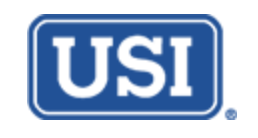How The Sausage Gets Made: Inside CMS’ Home Health Payment Rulemaking Process
Home Health Care News | By Joyce Famakinwa
Every year, industry stakeholders anticipate the U.S. Centers for Medicare & Medicaid Services’ (CMS) release of the home health proposed payment rule and the final rule.
The final rule’s provisions and updates determine what the Medicare home health landscape will look like for the foreseeable future, but sometimes providers aren’t well-versed on the ins and outs of the rule-making process.
On an annual basis, there are several steps that CMS routinely goes through to put together the home health proposed payment rule.
It begins with the annual inflation update, otherwise known as the market basket index.
“That process to get to the proposed rule has two main elements to it,” National Association for Home Care & Hospice (NAHC) President William A. Dombi told Home Health Care News. “One of them is to look at what the formula is for determining the annual inflation update, and that examines a variety of cost elements and the weight given to those cost elements.”
Periodically, there’s a rebasing of the market basket index, and a revision to the weights given to each element, according to Dombi.
“That would entail examining what the inputs are, and then what the sources of those inputs might be,” he said. “CMS uses a combination of numbers from the cost report and Bureau of Labor Statistics data.”
This first step is for CMS to determine whether it will stick with its most recent formula or make adjustments.
Data is then sent to an outside firm that CMS uses to forecast what the inflation rate was estimated to be for the particular year. This year CMS likely used data from the third or fourth quarter of 2022, Dombi noted.
“The forecasting methodology is employed to say, ‘Okay, if this is what the trends look like, this is what the inflation in cost will be during 2024,” he said. “It really is a prediction of inflation costs.”
Budget neutrality adjustment — which has received industry pushback after the switch to the Patient-Driven Groupings Model — is also a big factor when it comes to the proposed rule and the proceeding final rule.
Achieving budget neutrality is a fairly complex process, health care policy expert Lisa Grabert told HHCN.
“CMS has rules that they have to follow [regarding] budget neutrality, and they’re given some flexibility in how they can achieve that,” she said.
Read Full Article
|

